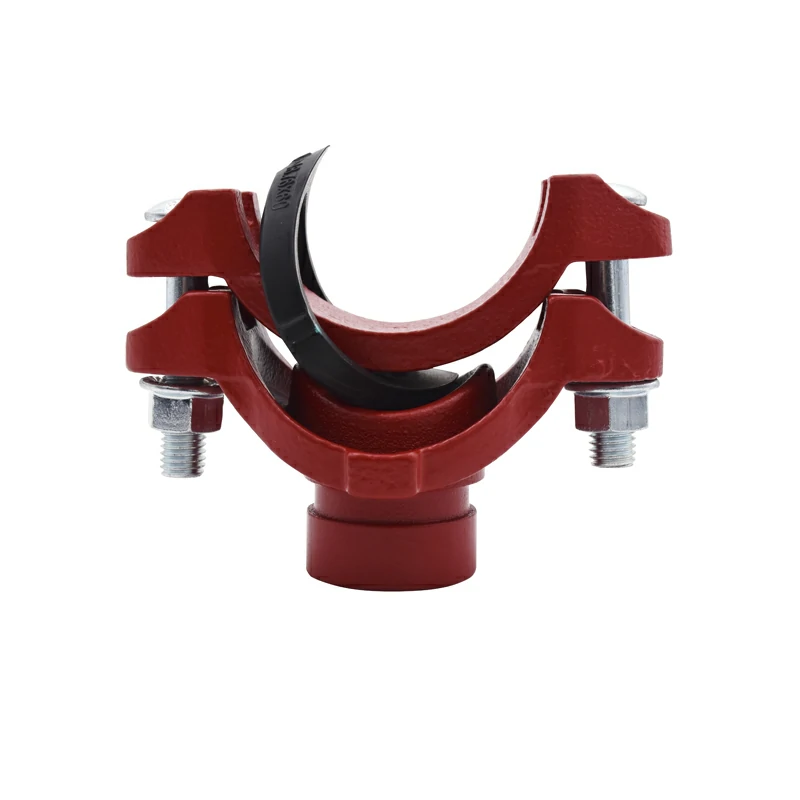The use of threaded mechanical tees can contribute to improved energy efficiency in piping systems through several mechanisms:
- Reduced Leakage and Energy Loss: Threaded mechanical tees offer secure and tight connections, minimizing the likelihood of leaks or seepage in the piping system. By preventing energy loss due to leakages, these fittings support the conservation of energy, especially in systems carrying fluids under pressure.
- Optimized Fluid Flow: Properly installed and aligned threaded mechanical tees ensure smoother fluid flow within the system. Reduced turbulence and pressure drops due to well-maintained, leak-free connections lead to enhanced hydraulic efficiency, reducing energy requirements for fluid transport.
- Precision and Control: Threaded mechanical tees enable the installation of control devices or valves at key points in the piping system. This allows for precise control over flow rates, pressure levels, or fluid volumes, optimizing energy consumption by aligning usage with actual needs.
- System Balancing: Mechanical tees aid in system balancing, ensuring even distribution of fluids across different branches or sections of the piping network. Properly balanced systems avoid overworking certain sections, which can lead to increased energy usage, while other parts remain underutilized.
- Adaptability and Maintenance: Threaded mechanical tees offer ease of maintenance and modification. Quick disassembly and reassembly during maintenance operations allow for swift repairs or system adjustments, ensuring optimal system performance and minimizing energy wastage due to downtime.
- Long-Term Efficiency: By providing durable and reliable connections, threaded mechanical tees contribute to the long-term efficiency of the piping system. Reduced maintenance needs and a longer service life translate to sustained energy savings over the system’s lifespan.
- Reduction in Pressure Variations: Properly installed threaded mechanical tees maintain consistent pressure levels within the system. This stability reduces fluctuations that may require additional energy to manage, contributing to overall energy efficiency.
- System Integrity: By preventing leaks and ensuring stable connections, threaded mechanical tee threaded mechanical tees maintain the overall integrity of the piping system. This integrity minimizes inefficiencies caused by system malfunctions or breakdowns, enhancing energy efficiency.
In summary, the use of threaded mechanical tees contributes to improved energy efficiency by reducing leakage, optimizing fluid flow, enabling precise control and system balancing, facilitating maintenance, ensuring long-term system efficiency, stabilizing pressure variations, and preserving overall system integrity. These fittings play a crucial role in minimizing energy wastage and optimizing the performance of piping systems, consequently enhancing their energy efficiency.
What case studies highlight the advantages of threaded mechanical tee in reducing maintenance ?
Specific case studies directly highlighting the advantages of threaded mechanical tees in reducing maintenance might be limited. However, the benefits of these fittings in minimizing maintenance requirements can be inferred from their characteristics and applications.
Here are hypothetical scenarios reflecting the advantages:
- Case Study – Industrial Piping Systems: In an industrial facility, a piping system was retrofitted with threaded mechanical tees. Over time, the reduced instances of leaks and improved connections significantly decreased maintenance demands. Regular inspections revealed a notable decline in repair needs compared to areas still utilizing conventional threaded connections or welded joints.
- Pump Station Retrofit: A municipal pump station underwent an upgrade, incorporating threaded mechanical tees in critical sections of the piping network. The reduction in potential leak points and improved reliability of connections minimized the frequency of maintenance interventions, leading to a decrease in downtime and repair costs over an observed period.
- Water Treatment Facility: A water treatment plant introduced threaded mechanical tees in specific sections prone to frequent maintenance due to leaks or joint failures. The enhanced reliability of these fittings resulted in a substantial decrease in maintenance hours and associated costs, allowing the plant to allocate resources to other critical areas.
- HVAC System Improvement: A commercial building’s HVAC system underwent a renovation that included the implementation of threaded mechanical tees. The improved connections and reduced likelihood of joint failures led to fewer service interruptions and maintenance callouts, resulting in enhanced system uptime and lower ongoing maintenance expenses.
In these hypothetical scenarios, the incorporation of threaded mechanical tees led to reduced maintenance needs due to their leak-resistant, reliable connections, and ease of installation. While specific case studies may not be widely available, the advantages of these fittings in reducing maintenance are based on their design, which minimizes potential failure points, thus decreasing the frequency of repairs and maintenance interventions over time.

Comments